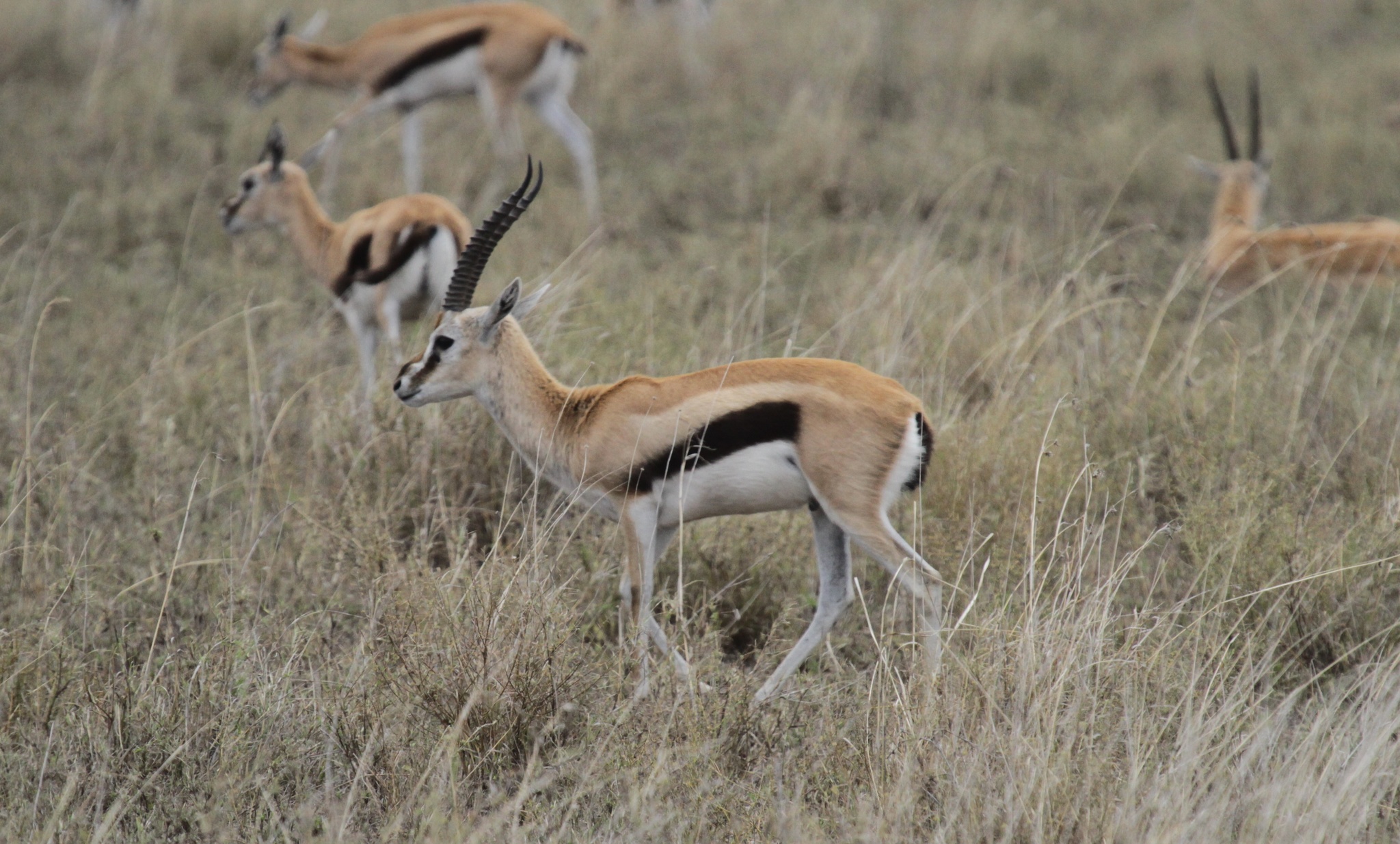- Home
- Conservancy
- Thomson s gazelles
WHERE TO SEE Thomson s gazelles
Description
The Thomson's gazelle (Eudorcas thomsonii) is one of the best-known gazelles. It is named after explorer Joseph Thomson and is sometimes referred to as a "tommie". It is considered by some to be a subspecies of the red-fronted gazelle and was formerly considered a member of the genus Gazella within the subgenus Eudorcas, before Eudorcas was elevated to genus status. Thomson's gazelles can be found in numbers exceeding 550,000 in Africa and are recognized as the most common type of gazelle in East Africa. The Thomson's Gazelle can reach speeds of 50 miles an hour. It is the second fastest animal on earth.
Thomson's gazelle is a relatively small gazelle; it stands 55–82 centimetres (22–32 in) at the shoulder. Males weigh 20–35 kilograms (44–77 lb), while the slightly lighter females weigh 15–25 kilograms (33–55 lb). The head-and-body length is typically between 80 and 120 centimetres (31 and 47 in). Kingdon noted that physical measurements show a decrease from the northern to the southern parts of the gazelle's range. Facial characteristics of the gazelle include white rings around the eyes, black stripes running from a corner of the eye to the nose, rufous stripes running from the horns to the nose, a dark patch on the nose and a light forehead.
The coat is sandy brown to rufous; a distinctive black band runs across the flanks, from the upper foreleg to just above the upper hindleg. A buff band can be seen just above the black stripe. Short black streaks mark the white rump. The black tail measures 15–27 centimetres (5.9–10.6 in). Males have well-developed preorbital glands near the eyes, which are used for scent-marking territories. Both sexes possess horns, that curve slightly backward with the tips facing forward. The horns, highly ringed, measure 25–43 centimetres (9.8–16.9 in) on males and 7–15 centimetres (2.8–5.9 in) on females. However, females have highly fragile horns; some are even hornless. Grant's gazelle is very similar to Thomson's gazelle, but can be told apart by its larger size and a large white patch on the rump.
The two subspecies differ markedly in their appearance. The eastern Thomson's gazelle is the larger of the two, with fainter facial markings. The Serengeti Thomson's gazelle, on the other hand, has a whiter face with more conspicuous markings. The horns of females are shorter than those of males to a greater degree in the eastern Thomson's gazelle; moreover, the horns are more divergent in the eastern Thomson gazelle.
Fun Facts
During the wet season, a time when grass is abundant, adult male gazelles will graze extensively. They spread out more and establish breeding territories. Younger males usually spend their time in bachelor groups, and are prevented from entering the territories. Females form migratory groups that enter the males' territories, mostly the ones with the highest-quality resources. As the female groups pass though and forage, the territorial males may try to herd them, and are usually successful in preventing single females from leaving, but not whole groups.
Subadult males usually establish dominance through actual combat, while adults are more likely to do rituals. If a bachelor male should be passing through a territorial male's region, the male will chase the offender out of his territory.[5] When patrolling his territory, a male may use his horns to gore the grass, soil, or a bush. Males will also mark grass stems with their preorbital glands, which emit a dark secretion. Territories of different males may share a boundary. When territorial males meet at the border of their territories, they engage in mock fights in which they rush towards each other as if they are about to clash, but without touching.After this, they graze in a frontal position, then in parallel and them in reverse, and move away from each other while constantly grazing. These rituals have no victor, but merely maintain the boundaries of the territories.Territorial males usually will not enter another male's territory. If a male is chasing an escaping female, he will stop the chase if she runs into another territory, but the neighboring male will continue the chase.
.jpg)




 Fabian,.jpg)